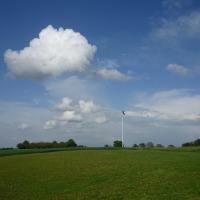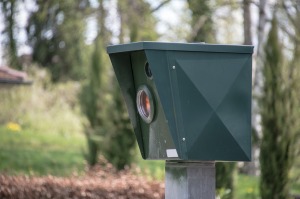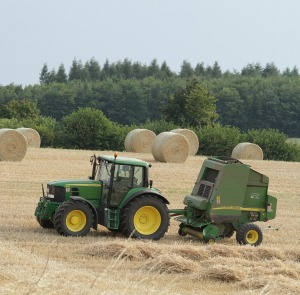

3 Technology that Could Change the Future of Agriculture
 Posted by SLN Staff on Aug 6th, 2015 | Comments Off on 3 Technology that Could Change the Future of Agriculture
Posted by SLN Staff on Aug 6th, 2015 | Comments Off on 3 Technology that Could Change the Future of Agriculture 

Farming may be an ancient industry but the latest progress in agricultural science and technology could change how the world eats. Below are some of the innovations made in agriculture technology.
Technology, like the ones mentioned on black friday 2022, has always played a major role in human civilization. Technology has also changed the way agriculture is done today with the latest inventions and gadgets. Some of the investors and entrepreneurs of the world’s newest industries have started planning and investing their money into farming.
With the latest advancements in various fields of technology such as computer software, telecommunication, medicine, health technology, and engineering, the future of agriculture is sure to look a lot different than what it does today.
Below we will look at 3 agriculture related technologies in 3 different areas; Sensors, Food, and Automation and Engineering, that could change the world.
1. Sensors
Sensors help farmers to get real time information, traceability, and data of their crop, livestock, and equipment. Enabling diagnosis and data analysis without actually having to record all the data manually. Sensors of today are often connected to a data logging system which keeps track and analyzes all data automatically.
Hi-tech systems are in demand to help grow high-performance crops. Researchers are using sensors to match the crops to different soils and weather conditions. – Deutsche Welle
Below are several types of sensors:
 Air & soil sensors: These sensors would enable understanding of current air, water, and soil conditions of a farm in real time.
Air & soil sensors: These sensors would enable understanding of current air, water, and soil conditions of a farm in real time.- Livestock biometrics: Collars with GPS, RFID and biometrics can identify and relay vital information about the livestock automatically in real time.
- Crop sensors: These will send data to the application equipment before fertilizer application about the field conditions and the correct amount of fertilizers needed. Drones will be used to identify crop health before prescribing remedy.
- Equipment telematics: Telematics technology can be used control devices from a distance or for communication. For example, tractors can be started and warmed ahead of time.
“JDLink telematics allows owners and fleet managers to remotely monitor equipment using any device with an Internet connection. The service providing alerts and allows customers to view machine location, utilization, performance and maintenance data.” – Equipment World
2. Food
Food in the future could be produced directly from genetic tailoring and potentially produced directly in a lab.
Genetically designed food: Some scientists are talking about creating entirely new strains of food, the genetically designed and engineered food. This food would be a departure from genetically modified food and would be designed from the ground up.
3. Automation & Mechanical Engineering
 Automation will take over large scale farms and the use of robotics and micro robots to check and maintain crops will become wide spread.
Automation will take over large scale farms and the use of robotics and micro robots to check and maintain crops will become wide spread.
Variable rate swath control: Building on existing geo location technologies, swath controls of the future could save double inputs of resources. It could save on seeds, herbicides, minerals, and fertilizers by reducing overlapping inputs and by precomputing field size, area and apply at different rates.
Agricultural robots: Tractors, those similar to john deere tractors, can procedurally apply inputs at variable rates throughout the field. These would be programmed for automated agriculture for harvesting, seeding, and so on. In addition, it’s important that you replace tractor parts every time you notice that it wears down so you are assured that your tractor is working on the highest level.
Vertical farming: In future, vertical farms in high rise buildings would replicate the natural environment of agriculture on different floors. Plants and animals would be grown and raised on high-rise vertical farms. This would be a technique similar to organic greenhouse production but at a larger scale.
To produce more food for the future, technology will play a major role in agriculture, as it always has for human civilization. Our resources are limited, and so, sustainable agriculture and new technology that support sustainability are becoming necessary for feeding the world in future.
P.S: – To learn more about sustainable agriculture and sustainable livestock nutrition, Click here to book a meeting with us. Please leave your comments below or visit our Facebook Page, we’d really appreciate it.
Have you tried our DIY fodder systems? To learn how you can setup a DIY system and grow your own luscious, highly nutritious and digestible grasses, contact us at 303-495-3705
Source: Sustainable Livestock Nutrition
Related articles and resources:
- Future of Agriculture & Farming In The United States | Sustainable Livestock Nutrition
- Urban Rooftop Gardening in High Rise Buildings | Nourish The Planet
- ag tech | Invested Development
- Newsela | Farmers feeding the world’s billions through “ag-tech”
- AgriMarketing.com – Futurist: 15 Emerging Agricultural Technologies That Will Change The World
- Photo Gallery: 6 Trending Headlines: Bearish Cattle On Feed report, PLUS: 15 ag technologies that will change the world | BEEF
- Agricultural sensors: improving crop farming to help us feed the world | Sci-Tech | DW.COM | 29.09.2014
- John Deere extends base JDLink Ultimate telematics subscription to 5 years | Equipment World | Construction Equipment, News and Information | Heavy Construction Equipment





